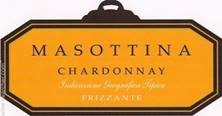In a recent case decided by the Court of Venice (decision n. 2355/2018), MHCS, the producer, inter alia, of the famous Veuve Clicquot champagne, prevailed against a prosecco producer who used orange labels on its prosecco, based on its abstract colour mark “jaune orange” registered as an EUTM. However, absent proof of acquired distinctiveness for the colour “cream” (and absent a colour mark registration), the parallel action concerning the Moet Chandon lookalike failed.
MHCS owns an EUTM registration for the colour trademark  – jaune orange – filed in 1998 and granted in 2007 following demonstration of acquired distinctiveness for champagne wines in class 33. Along with its sister company, Moët Hennessy Italia S.p.A., (collectively, the Plaintiff) filed an infringement action against Masottina S.p.A. (the Defendant) which was producing prosecco wines “Cuvée Dolce” and “Chardonnay frizzante”.
– jaune orange – filed in 1998 and granted in 2007 following demonstration of acquired distinctiveness for champagne wines in class 33. Along with its sister company, Moët Hennessy Italia S.p.A., (collectively, the Plaintiff) filed an infringement action against Masottina S.p.A. (the Defendant) which was producing prosecco wines “Cuvée Dolce” and “Chardonnay frizzante”.
The Plaintiff alleged that the Defendant’s use of an orange-colour background on its labels of “Chardonnay frizzante” and “Cuvée Dolce” violated and took unfair advantage from the registered and non-registered reputed trademark jaune orange, notably used since mid-1800 on its famed champagne Veuve Clicquot with consequent damages to its distinctive character. Here is the trade dress involved:
![]() versus
versus 
![]()
In addition, the Plaintiff alleged that the Defendant’s Prosecco Treviso Extra Dry imitated the cream-based trade dress of the bottle of Moët & Chandon Brut Imperial.
![]() versus
versus 

The Court of Venice firstly held that champagnes and wines target a public with an average level of attention (contrary to the Court of Turin who had previously considered that consumers displayed an increased level of attention for champagnes, decision no 547/2015).
Subsequently, the Venice Court recognized that the colour mark jaune orange was inherently non-distinctive, but had acquired distinctive character through intensive use, as recognised by the EUIPO Board of Appeal in the application proceedings based on evidence of intensive use throughout the EU. This finding was supported by the additional evidence filed in the proceedings including a 2015 EUIPO decision rejecting an invalidity action against the Plaintiff’s colour mark.
Since consumers rely on the imperfect recollection of a trademark, and perceive it as a whole, without remembering its single elements or slight shade of (orange) colour, and since the jaune orange had become distinguishable as an indication of origin for champagnes, the Court found that consumers seeing a colour jaune orange on the label (also of) a bottle of wine would immediately associate the wine with Veuve Clicquot, without noticing (or paying enough attention to) different “shades” or other elements placed on the bottle or the labels. Hence the Court found that the labels of “Cuvée Dolce” and “Chardonnay frizzante” infringed the trademark jaune orange.
However, regarding the imitation of the trade dress of Moët & Chandon by the bottle of Prosecco Treviso Extra Dry of the Defendant, the Court considered that the “cream” colour was a neutral colour and not particularly distinctive, and thus no unfair competition could be found where the similarities only concerned non-distinctive elements.
Finally, the Court rejected the equation “acquired distinctiveness=reputation” argument based on the same evidence and allegations, as to the use and dissemination of the mark, proffered to establish acquired distinctiveness.
The Court noted that a colour mark is a sign intrinsically devoid of distinctive character. It may only acquire distinctiveness through use. Once such mark has acquired distinctiveness, the law “certainly requires something more than what was enough to confer distinctiveness to a sign that in itself lacked it” to achieve reputation. In other words, while a certain percentage of recognition is necessary to acquire distinctiveness, a higher degree is necessary to achieve reputation. Therefore, although the evidence showed how intense use and advertising campaigns had enabled the colour mark jaune orange to acquire distinctive character, such activities were thereafter necessary to maintain the distinctiveness of the mark in the consumers’ perception, given also that the use orange colour is otherwise common in the market. Without any further evidence, however, no reputation could be automatically be recognized.
_____________________________
To make sure you do not miss out on regular updates from the Kluwer Trademark Blog, please subscribe here.



excellent piece. is it possibile to read the sentence?